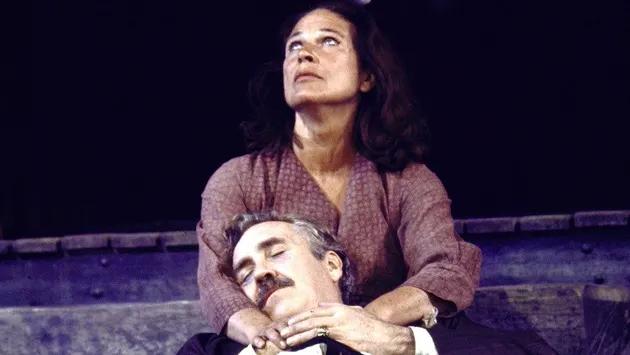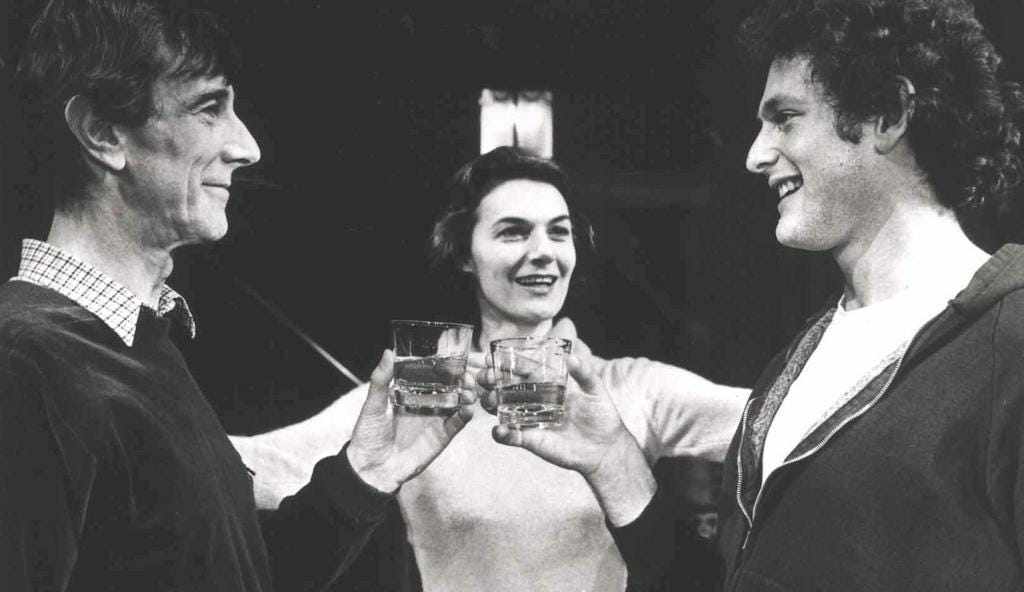
Hello, Dolly! opened in 1964 to rave reviews, a then-record-breaking ten Tony Awards (out of eleven nominations) and sold-out houses. After its first Dolly, Carol Channing, completed a two-year run, she took it out on a national tour, succeeded on Broadway by fading, but still vibrant stars of stage and screen like Ginger Rogers, Martha Raye and Betty Grable — nostalgic choices that helped keep the show of interest to the tourist trade. In 1965, Mary Martin launched its London engagement, then took it to Vietnam to perform for American troops, and others such as Eve Arden, Yvonne DeCarlo and Dorothy Lamour also popped up in various productions while the show was still running on Broadway. It became THE role for a certain brand of leading lady and, when decades later in 2017, at age seventy-one, Bette Midler brought her version to Broadway, it broke every box office record the Shubert Theatre had ever known, with Midler becoming the third person to nab a Tony for portraying Dolly Gallagher Levi.
But during the original production's third year on Broadway, its publicity heat-seeking-missile of a producer, David Merrick, had the idea to send out on the road a Dolly! company with an all-Black cast. In 1967, some thought this progressive; some regressive. It must be noted that this was a time of tremendous racial unrest in the U.S. and the idea was unquestionably controversial. However, regular theatergoers saw past all that, craving the pure entertainment value it provided. Choosing Washington D.C. to begin with was a bit dicey, but Merrick’s idea to portray the meddlesome Dolly — Pearl Bailey — was an inspired one. This beloved entertainer was to prove an ideal choice and she personally loved the idea of opening the show at a theatre where, as a child, she would have been forbidden to enter through the front door. And with her superb comic timing and keen musicality, Bailey was a sensation. Business was so good that it didn’t take long for Merrick, always keen on stirring things up, to take the chance on bringing her and the entire company to take over its waning Broadway production to improve its fortunes. Heralding the arrival with a full-page ad in the Times, it announced: The Event of the Century!” It wasn’t far off the mark. As the fifth Dolly, Pearl Bailey once again made it the toughest ticket in town.

By 1967, Pearl Bailey had been singing on stage professionally for more than thirty years, having first been discovered at the age of fifteen. Her Broadway credits already included the original casts of St. Louis Woman and House of Flowers; film credits like Carmen Jones and Porgy and Bess, and was ubiquitous on the many television musical variety programs of the 1950s and 60s, appearing alongside everyone from Dinah Shore to Perry Como to Ed Sullivan. It was on The Ed Sullivan Show where I first fell in love with her unique style of charming an audience into total submission, including the somber-faced Ed himself. Just check out this bit of improvisation with Sullivan that is pure gold.
By the time I saw her in Dolly, the fifty-one year-old Bailey had been playing the part for more than two years, but you would never have known it. She was sly, wicked, forceful, sexy, and hilarious. Opposite her in the role of Horace Vandergelder was the jazzy and delightful Cab Calloway, who was well-suited to the role. And I will never forget when after the curtain came down for what I thought would be the final time, it rose back up and Bailey held her hand up for everyone to quiet down. Then she performed another show — bits and pieces from her nightclub act — with Calloway joining in at one point with his “Hi-De-Ho” signature song. Of course, years later I was to learn that even if this was something the audience adored, most of the Dolly! company, forced to remain on stage and watch this display eight times a week, didn’t have as good a time. Essentially captive prisoners, they were missing trains to get home to their families or losing valuable rest time between a matinee and evening performance. But Bailey was the boss, and in the tradition of Al Jolson (who would do the exact same thing after his Broadway appearances in the 1920s and 30s), there was nothing anyone could do about it. Once she'd kick off her shoes complaining that her feet hurt, the crowd melted. You can't fight a tidal wave of love over the footlights.
When I interviewed the theatre critic and essayist John Lahr in 2015, we delved into some of the plays and musicals he had seen in a lifetime of theatergoing that began in the mid-1940s. He asked me if I had been fortunate enough to have seen Pearl Bailey as Dolly. When I told him I had, he pronounced it the greatest performance he'd ever seen in a musical. High praise indeed. If you need any proof, here she is at the 1968 Tonys before being presented with a special award honoring her unique Dolly — her one and only Tony.
In the LIFE Magazine cover story on the historic re-casting, Pearl Bailey responded to some people's criticism. "Integration is one of the most distasteful words in the language. Wherever I am, that's integration — because there's love there." After David Merrick had approached her with the idea of taking on the role, Bailey said "Nothing was said then about it being a particular kind of cast, and later when I heard it was going to be an all-colored company, I paid it no mind." But others did. Frederick O'Neal, the founder of the American Negro Theatre and then serving as the first Black president of Actors' Equity, stated that in the spirit of true integration, the Dolly company should have had its share of white actors, too. Then there were white critics who felt that the whole idea of having the company be an all-Black one reeked of condescension. Bailey rightly struck back with the comment, "Why didn't they worry about it at the time of the first Dolly?"
"Having an all-Negro cast — or an all-Jewish or all-Chinese one, for that matter — is not the idea at all," O'Neal stated in a New York Times interview in July 1967, before Pearl Bailey even went into the show. "Of course, Negroes need the work they will get in the all-new production of Hello, Dolly! But we are sacrificing our principles for a few bucks."
Clive Barnes, then the lead theatre critic for the New York Times, was one of those who admitted to being prejudiced prior to seeing the new cast. As he wrote in his review in November 1967: "Frankly my sensitive white liberal conscience was offended at the idea of a nonintegrated Negro show. It sounded too much like Blackbirds of 1967, and all too patronizing for words." He also admitted to "not having been bowled over by it [Dolly!] earlier," only then to go and state, "But believe me, from the first to the last I was overwhelmed." He goes on to praise Pearl Bailey's performance for four lengthy paragraphs, concluding with what she did during the title tune claiming that "the audience would have elected her Governor if she'd only named the state."
I found all this fascinating to read in the current atmosphere of diversity casting in 2021. It reminded me that when there was talk of Queen Latifah succeeding Bette Midler in the last Dolly revival, many wondered aloud in various chat rooms if it would have meant an all-Black company taking over show as it did fifty years earlier. Personally, I don't think it would have been acceptable. It begs the question of why one race over another? And why should everything be homogenized, defeating the goal of broad-based casting? Although, in an effort to play devil’s advocate, since all the leads were white when the Midler Dolly opened, wouldn’t that in itself be classified as homogenization?
Years later, in what would prove his final rage against the dying of light as a producer, David Merrick imported in an all-Black revival of the Gershwin's 1927 musical Oh, Kay! from Connecticut's Goodspeed Opera House. Not only did it fail, but it was something of a fiasco, lambasted by then-New York Times theatre critic Frank Rich with the following: "Oh, Kay! can be labeled a Merrick enterprise only because of the size of his billing and the ubiquitousness of a shade of red that has been standard issue in all his productions since Hello, Dolly!"
If you enjoy these columns, check out Up in the Cheap Seats: A Historical Memoir of Broadway, available at Amazon.com in hardcover, softcover and e-book. Also, follow me here on Scrollstack and feel free to email me with comments or questions at Ron@ronfassler.org.





















Write a comment ...